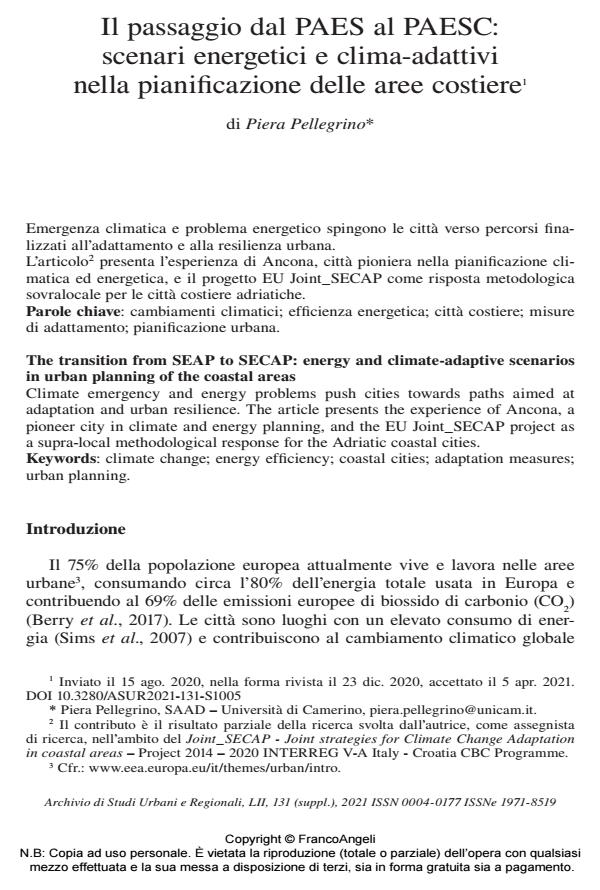The transition from SEAP to SECAP: energy and climate-adaptive scenarios in urban planning of the coastal areas
Journal title ARCHIVIO DI STUDI URBANI E REGIONALI
Author/s Piera Pellegrino
Publishing Year 2021 Issue 2021/suppl. 131
Language Italian Pages 21 P. 97-117 File size 155 KB
DOI 10.3280/ASUR2021-131-S1005
DOI is like a bar code for intellectual property: to have more infomation
click here
Below, you can see the article first page
If you want to buy this article in PDF format, you can do it, following the instructions to buy download credits

FrancoAngeli is member of Publishers International Linking Association, Inc (PILA), a not-for-profit association which run the CrossRef service enabling links to and from online scholarly content.
Climate emergency and energy problems push cities towards paths aimed at adaptation and urban resilience. The article presents the experience of Ancona, a pioneer city in cli-mate and energy planning, and the EU Joint_SECAP project as a supra-local methodologi-cal response for the Adriatic coastal cities.
Keywords: climate change; energy efficiency; coastal cities; adaptation measures; urban planning
- Marinela Krstinić Nižić, Zvonimira Šverko Grdić, Antonio Dekanić, pp.161 (DOI:10.20867/thi.26.2)
Piera Pellegrino, Il passaggio dal PAES al PAESC: scenari energetici e clima-adattivi nella pianificazione delle aree costiere in "ARCHIVIO DI STUDI URBANI E REGIONALI" suppl. 131/2021, pp 97-117, DOI: 10.3280/ASUR2021-131-S1005